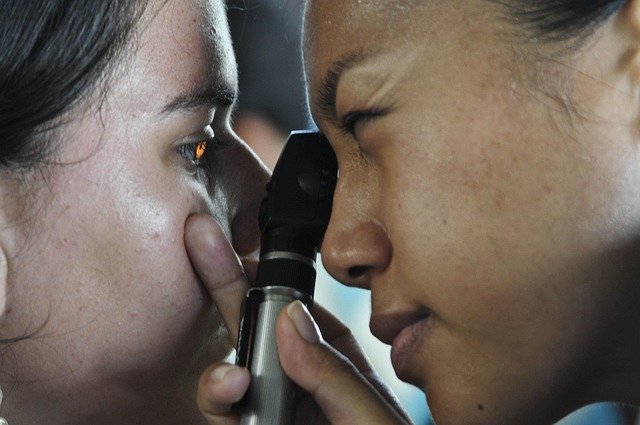What to Know Before Getting LASIK Eye Surgery
LASIK (Laser-Assisted In Situ Keratomileusis) is a popular vision correction procedure that helps reduce or eliminate the need for glasses or contact lenses. It uses a precision laser to reshape the cornea, allowing light to focus properly on the retina — improving overall vision clarity. Understanding the process, risks, and requirements before deciding is essential.

LASIK (Laser-Assisted In Situ Keratomileusis) represents one of the most widely performed elective surgeries globally, with over 700,000 procedures conducted annually in the United States alone. The procedure typically takes 10-15 minutes per eye and involves creating a thin flap in the cornea, reshaping the underlying tissue with an excimer laser, and repositioning the flap to heal naturally.
Understanding the Benefits of LASIK Surgery
LASIK surgery offers numerous advantages for eligible candidates. Most patients experience dramatically improved vision within 24-48 hours, with many achieving 20/20 vision or better. The procedure eliminates or significantly reduces dependence on corrective eyewear, providing freedom for sports, swimming, and daily activities. Unlike contact lenses, LASIK eliminates ongoing maintenance costs and the risk of eye infections associated with lens wear.
The surgery also offers long-term stability, with most patients maintaining their improved vision for decades. Modern LASIK techniques have reduced recovery time significantly, allowing most people to return to work within one to two days. The procedure is virtually painless, performed under topical anesthesia, and complications are rare when performed by experienced surgeons.
Exploring LASIK Prices and Financial Considerations
LASIK surgery costs vary significantly based on location, surgeon experience, technology used, and the complexity of your vision correction needs. Understanding the financial investment helps in planning and comparing options effectively.
Typical LASIK pricing ranges from $2,000 to $4,000 per eye, with the national average around $2,500 per eye. Premium procedures using advanced wavefront technology or custom treatments may cost $3,000 to $5,000 per eye. These prices often include pre-operative consultations, the surgery itself, and post-operative care for a specified period.
Many factors influence pricing, including the surgeon’s reputation, geographic location, facility overhead, and technology employed. Urban areas typically have higher costs than rural locations, while experienced surgeons with specialized training may charge premium rates.
| Provider Type | Average Cost Per Eye | Technology Used | Additional Services |
|---|---|---|---|
| National Chains | $1,800 - $3,000 | Standard LASIK | Basic aftercare |
| Independent Surgeons | $2,500 - $4,500 | Custom/Wavefront | Comprehensive care |
| Academic Centers | $2,200 - $3,800 | Latest technology | Research protocols |
| Premium Centers | $3,500 - $5,500 | All-laser, custom | Lifetime enhancements |
Prices, rates, or cost estimates mentioned in this article are based on the latest available information but may change over time. Independent research is advised before making financial decisions.
Finding LASIK Services Available in Your Area
Locating qualified LASIK providers requires careful research and consideration of multiple factors. Start by consulting your current eye care professional for referrals to reputable refractive surgeons in your area. Most optometrists and ophthalmologists maintain networks of trusted colleagues specializing in LASIK procedures.
Research local providers through professional organizations like the American Academy of Ophthalmology or the American Society of Cataract and Refractive Surgery. These organizations maintain directories of board-certified surgeons with specialized training in refractive procedures.
When evaluating local services, consider factors beyond cost, including surgeon experience, technology available, patient satisfaction rates, and post-operative care policies. Schedule consultations with multiple providers to compare approaches, ask questions about their experience, and assess comfort levels with their staff and facilities.
Determining LASIK Candidacy and Preparation
Not everyone qualifies for LASIK surgery, and thorough evaluation is essential before proceeding. Ideal candidates are at least 18 years old with stable vision prescriptions for at least one year. Your prescription should fall within treatable ranges, typically up to -12.00 diopters for nearsightedness, +6.00 for farsightedness, and 6.00 diopters for astigmatism.
Healthy eyes free from diseases like glaucoma, cataracts, or severe dry eye syndrome are necessary for successful outcomes. Corneal thickness must be adequate to safely create the surgical flap and perform the correction. Pregnancy and nursing can temporarily affect vision stability, so surgery should be postponed during these periods.
Certain medical conditions and medications may disqualify candidates or require special precautions. Autoimmune disorders, uncontrolled diabetes, and medications that affect healing can impact surgical outcomes. A comprehensive pre-operative examination will determine your candidacy and identify any potential complications.
Understanding Risks and Recovery Expectations
While LASIK has an excellent safety profile, understanding potential risks and realistic recovery expectations is crucial for informed decision-making. Serious complications are rare, occurring in less than 1% of cases, but minor side effects are more common during the healing process.
Temporary side effects may include dry eyes, light sensitivity, glare, halos around lights, and fluctuating vision during the first few weeks. Most of these symptoms resolve as healing progresses, typically within three to six months. Dry eye symptoms may persist longer and require ongoing treatment with artificial tears or prescription medications.
Rare but serious complications can include infection, corneal flap problems, or undercorrection requiring additional procedures. Some patients may experience regression, where vision gradually returns toward pre-surgical levels, potentially requiring enhancement procedures.
Recovery involves following post-operative instructions carefully, including using prescribed eye drops, avoiding rubbing your eyes, and attending all follow-up appointments. Most patients can drive and return to work within one to two days, though complete healing takes several months.
LASIK eye surgery offers remarkable benefits for appropriate candidates, but success depends on careful evaluation, realistic expectations, and choosing experienced providers. Take time to research options in your area, understand the financial investment, and discuss all aspects of the procedure with qualified professionals before making this important decision.
This article is for informational purposes only and should not be considered medical advice. Please consult a qualified healthcare professional for personalized guidance and treatment.




